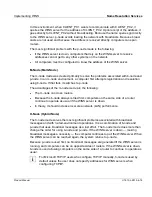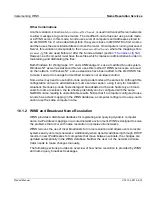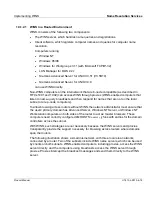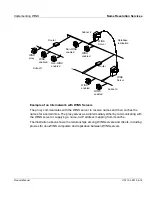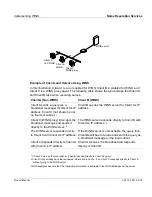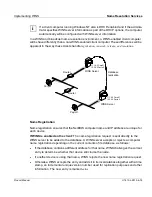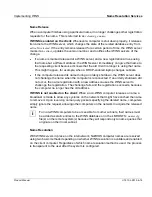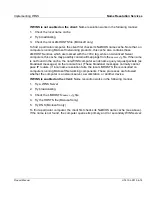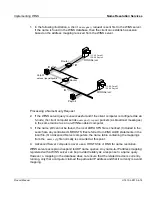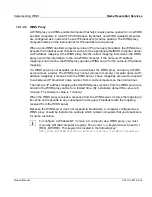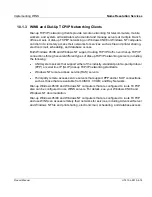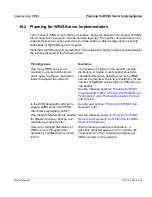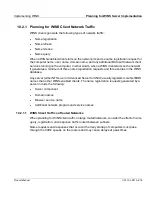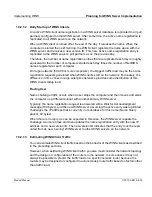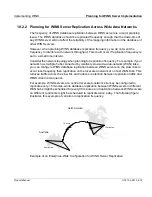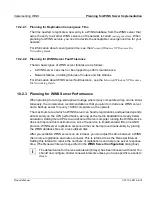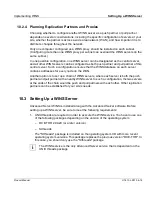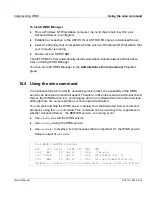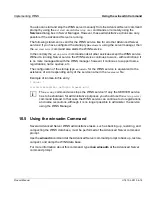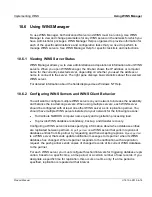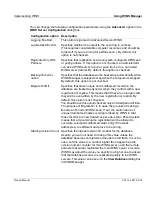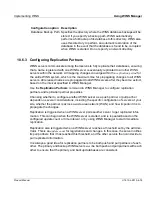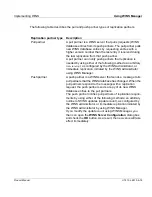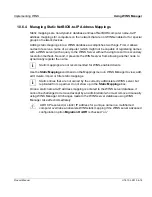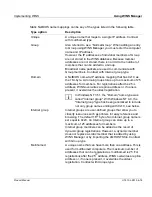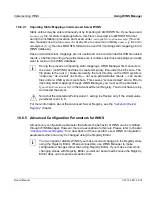
Implementing WINS
Planning for WINS Server Implementation
Product Manual
U7613-J-Z815-6-76
©
S
iem
e
n
s
N
ix
dor
f
In
fo
rm
at
io
n
s
s
y
s
te
m
e
A
G
1
9
9
5
P
fad
: D:
\O
7
613
e6
\u
761
3e
.k
10
10.2.1.2
Daily Startup of WINS Clients
An active WINS client name registration in a WINS server database is replicated to all pull
partners configured on that WINS server. After some time, the active name registration is
replicated to all WINS servers on the network.
When a WINS client is turned off at the end of the day, it releases the name. When the
computer is started the next morning, the WINS client registers the name again with the
WINS server and receives a new version ID. This new, active name registration entry is
replicated to the WINS server’s pull partners as on the previous day.
Therefore, the number of name registration entries that are replicated each day is roughly
equivalent to the number of computers started each day times the number of NetBIOS
names registered at each computer.
On large networks (50,000 or more computers), the biggest traffic load may be the name
registration requests generated when WINS clients start on the network. Fortunately, the
difference in time zones in large enterprise networks provides some distribution of this
WINS client startup load.
Roving User
Name challenge traffic occurs when a user stops the computer and then moves and starts
the computer on a different subnet with another primary WINS server.
Typically, the name registration request is answered with a Wait for Acknowledgment
message (100 bytes), and the new WINS server, assuming the active entry was replicated,
challenges the IP address that is currently in its database for this name (Name Query
packet, 92 bytes).
When there is no reply, as can be expected in this case, the WINS server repeats the
challenge two more times and then updates the name registration entry with the new IP
address and a new version ID. The new version ID indicates that the entry must be repli-
cated from its new “owning” WINS server to other WINS servers on the network.
10.2.1.3
Estimating WINS Client Traffic
You can estimate WINS client traffic based on the behavior of the WINS clients as described
in the preceding sections.
However, when estimating WINS client traffic, you also must consider the network topology
and the design or configuration of the routers in the network. In some cases it may not
always be possible to predict the traffic load on a specific network router because the
routers may be designed or configured to autonomously route traffic based on factors other
than traffic load.

